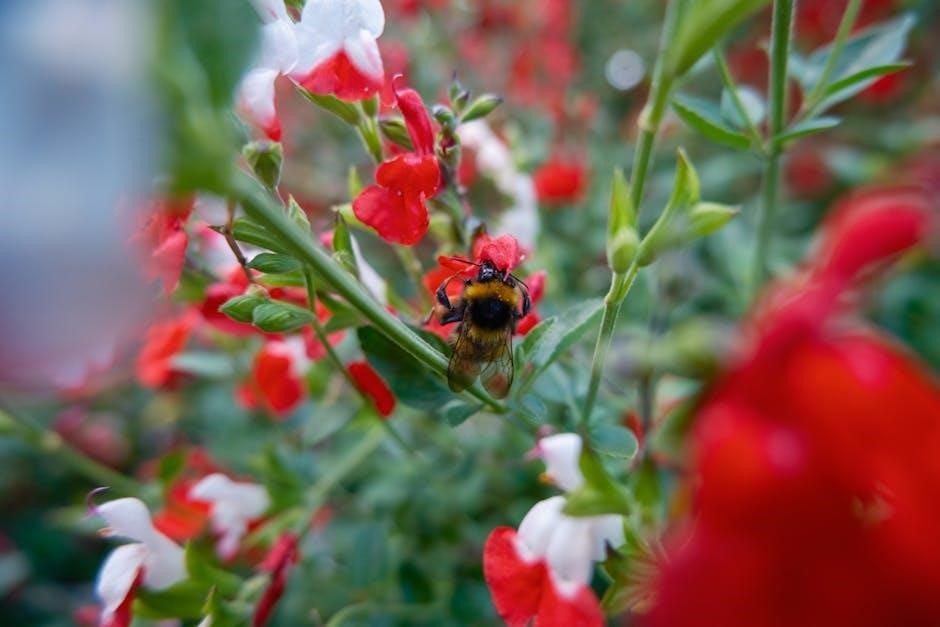
Mad honey, known for its unique properties and hallucinogenic effects, is a rare, potent honey produced from specific rhododendron flowers, offering both medicinal benefits and risks to consumers.
Definition and Key Characteristics
Mad honey, also known as deli bal, is a unique, potent honey produced by bees that gather nectar from specific Rhododendron species. It contains grayanotoxins, naturally occurring toxins that cause hallucinogenic and intoxicating effects. Characterized by its thick, dark color and strong aroma, mad honey is distinct from regular honey. Its production is limited to regions like Turkey, Nepal, and parts of Asia, where these rhododendron flowers thrive. The honey’s toxicity and rarity have made it a subject of both fascination and caution, with traditional healers and modern researchers exploring its properties and potential risks.
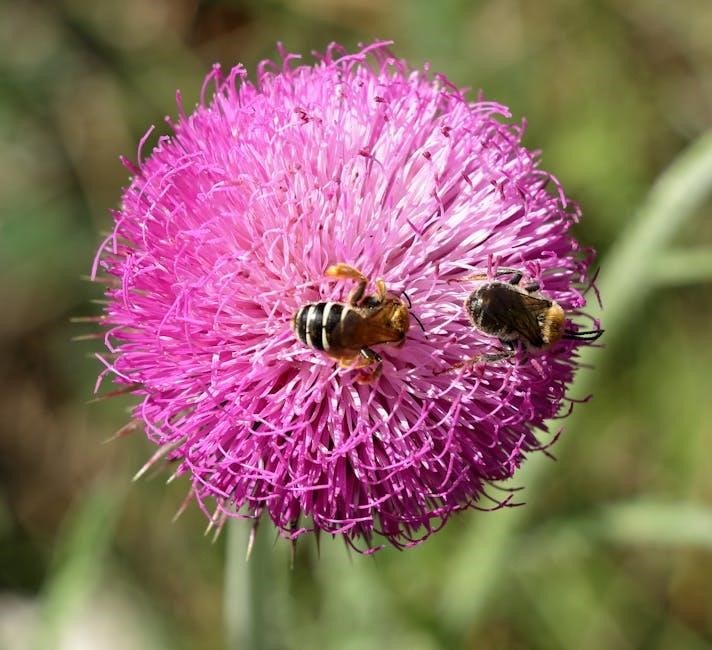
Production and Source of Mad Honey
Mad honey is sourced from Rhododendron flowers, primarily in Turkey, Nepal, and parts of Asia, where bees gather nectar to produce this rare, raw honey.
The Role of Rhododendron Flowers and Bee Activity
Rhododendron flowers are the primary source of mad honey, with bees collecting nectar from these plants to produce this unique honey. The flowers contain grayanotoxins, which are toxic compounds that give mad honey its distinct properties. Bees transfer these toxins into the honey during the pollination process, creating a product with hallucinogenic and medicinal effects. The specific species of Rhododendron, such as Rhododendron ponticum and Rhododendron luteum, are predominantly found in regions like Turkey and Nepal, where mad honey is most commonly produced. Bee activity is crucial in concentrating these toxins, resulting in a potent honey that has been used for centuries in traditional practices and medicine.
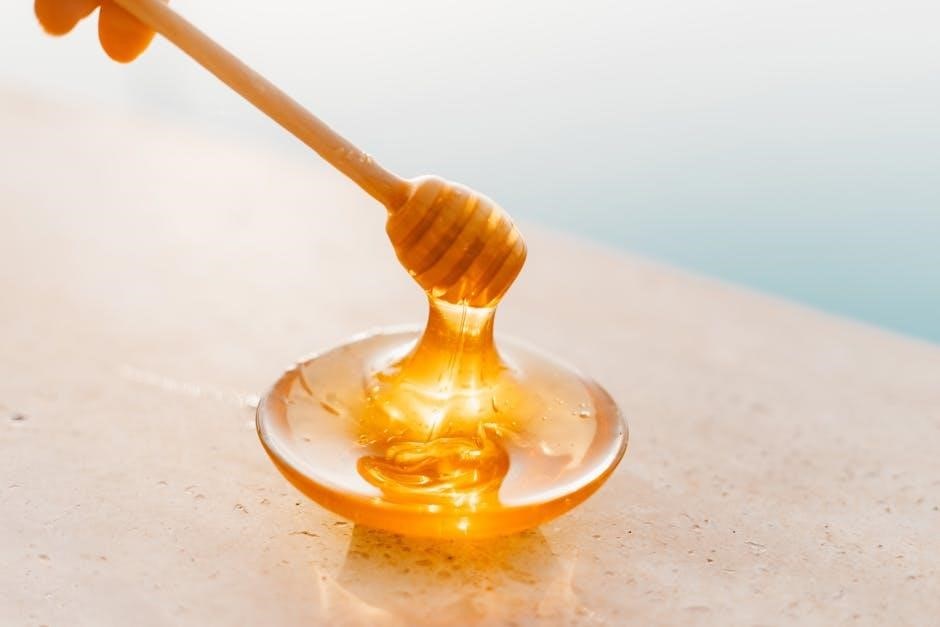
Historical Background of Mad Honey
Mad honey has ancient roots, with references in historical texts like Aristotle’s works and its use by Mithridates VI Eupator for poison resistance, showcasing its dual medicinal and intoxicating properties.
Ancient Uses and References in Historical Texts
Aristotle referenced Trapezus honey, noting its potent properties, while Mithridates VI Eupator reportedly used it to build poison resistance. Ancient texts highlight mad honey’s dual role as medicine and intoxicant, with uses in treating indigestion and as an aphrodisiac. Its hallucinogenic effects were both revered and warned against, reflecting its complex reputation. Historical accounts underscore its cultural significance and cautious use, blending fascination with fear. These references demonstrate mad honey’s enduring intrigue, bridging ancient practices with modern scientific curiosity about its unique properties and potential risks.
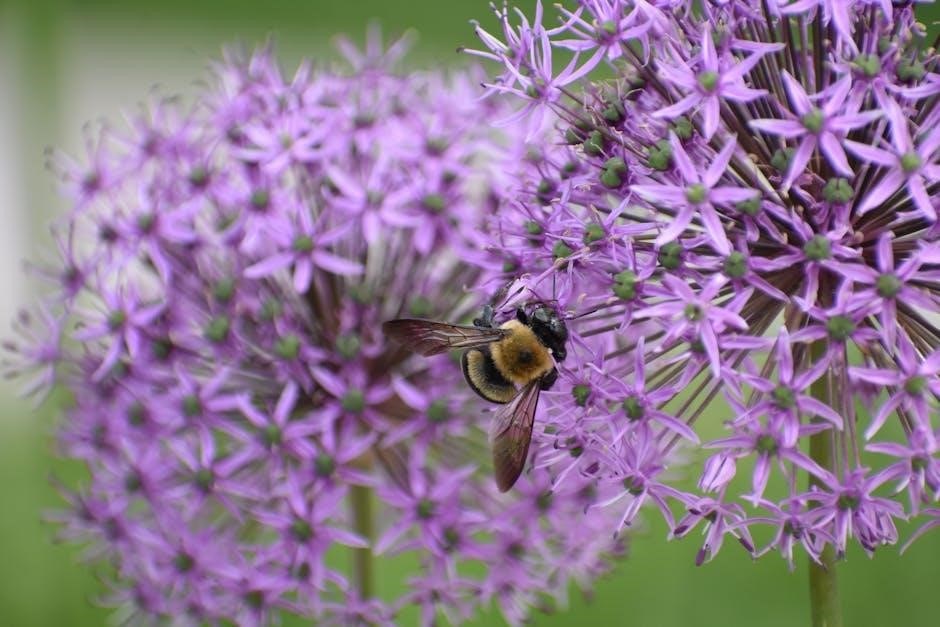
Chemical Composition and Properties

Mad honey contains grayanotoxins, toxic compounds from Rhododendron flowers, causing neurotoxic and cardiotoxic effects. Its unique chemistry makes it a potent, bioactive substance with both risks and benefits.
Grayanotoxins and Their Effects on the Human Body
Grayanotoxins, found in mad honey, are neurotoxic and cardiotoxic compounds that disrupt normal bodily functions. Consumption leads to symptoms like dizziness, nausea, and bradycardia within hours. These toxins affect the nervous and cardiovascular systems, causing dramatic drops in blood pressure and heart rate. While fatalities are rare, severe intoxication can occur with larger doses. Research highlights both the potential medicinal benefits and risks of grayanotoxins, emphasizing the need for cautious consumption and further study to harness their properties safely and effectively.
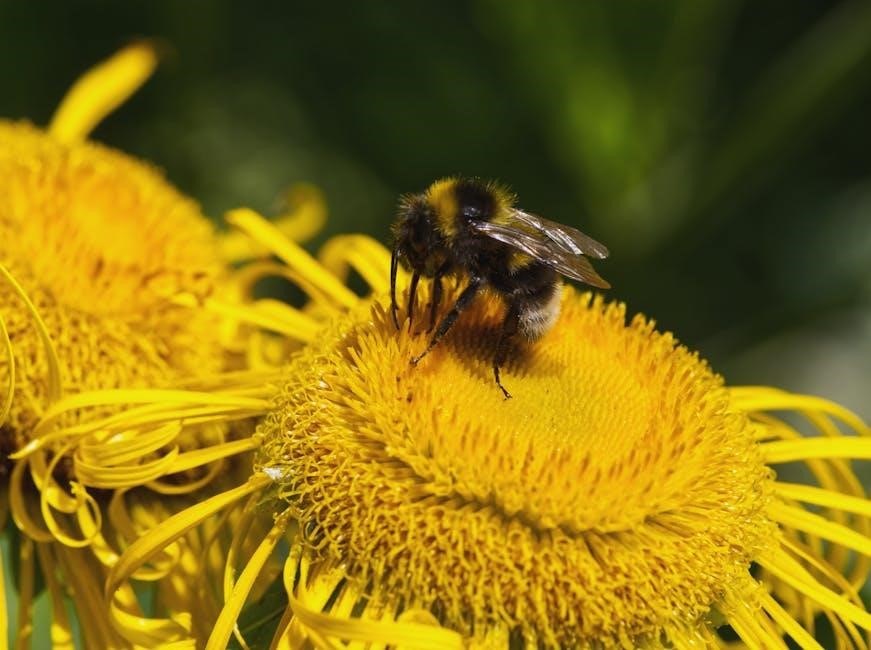
Medicinal Uses of Mad Honey
Mad honey is valued in traditional medicine for treating hypertension, diabetes, and digestive issues. Its antibacterial properties support immune health, though more research is needed to confirm efficacy.
Traditional and Modern Applications in Healthcare
Mad honey has been traditionally used to treat hypertension, diabetes, and gastrointestinal disorders due to its unique properties. Ancient texts, like those from Aristotle, highlight its therapeutic use. Modern research explores its potential in immune support, anti-inflammatory effects, and wound healing. Some studies suggest it may aid in treating peptic ulcers and dyspepsia. Despite its promise, further scientific validation is needed to confirm its efficacy and safety for widespread medical use. Its antibacterial and antifungal properties also make it a subject of interest in alternative medicine, blending ancient wisdom with modern healthcare innovations.

Culinary and Cultural Significance
Mad honey is a delicacy in some cultures, used in traditional dishes and rituals, while its unique properties make it a sought-after ingredient in exotic cuisine.
Mad Honey in Cuisine and Traditional Practices
Mad honey is cherished in various cuisines for its distinctive, potent flavor, often used as a delicacy in traditional dishes, desserts, and beverages. Its unique properties make it a sought-after ingredient in exotic recipes, while its cultural significance is deeply rooted in rituals and traditional medicine. In some regions, it is consumed for its perceived aphrodisiac qualities and as a natural remedy for ailments.
Additionally, mad honey is integral to certain cultural practices, such as traditional festivals and healing ceremonies. Its hallucinogenic effects have also led to its use in shamanic rituals, further highlighting its dual role as both a culinary treasure and a sacred substance.

Risks and Safety Concerns
Mad honey contains grayanotoxins, which can cause poisoning, leading to symptoms like dizziness, nausea, and bradycardia; Consumption must be cautious, as even small amounts can be hazardous.
Symptoms of Poisoning and Safe Consumption Levels
Mad honey poisoning symptoms include dizziness, nausea, vomiting, bradycardia, and presyncope, appearing within 0.5 to 4 hours after ingestion. Consuming 15-30 grams can lead to intoxication, with severity varying based on the amount and individual tolerance. Safe consumption levels are extremely low, typically less than 5 grams for most adults. Excessive intake can cause severe health risks, including dramatic drops in blood pressure and heart rate. Moderation is crucial, as even small amounts can be hazardous, particularly for vulnerable populations like the elderly or those with pre-existing heart conditions.
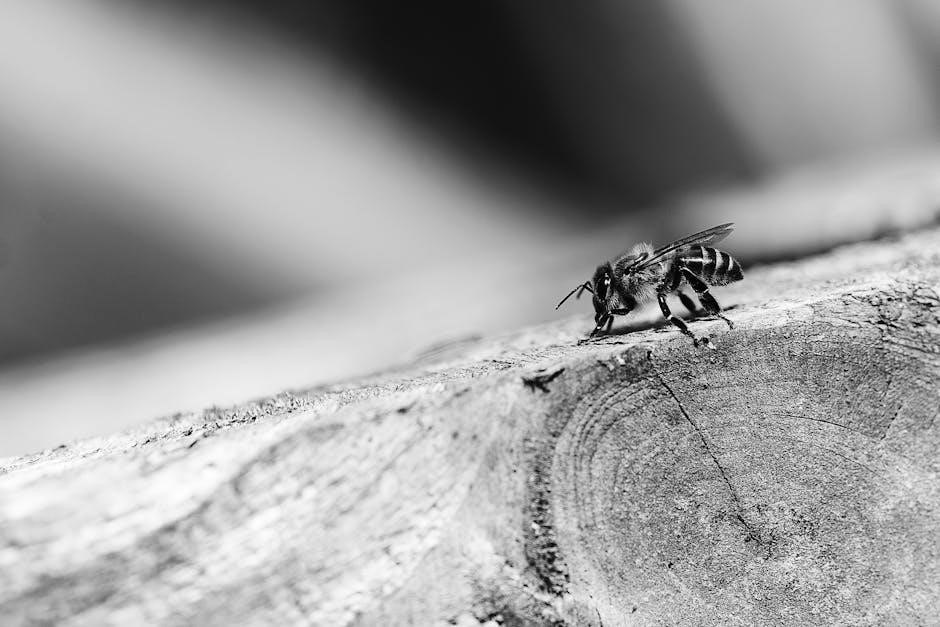
Research and Studies on Mad Honey
Research focuses on grayanotoxins, medicinal properties, and toxicity levels. Studies explore its effects on hypertension, diabetes, and antiradical activity, with a 2015 systematic review analyzing 1199 poisoning cases.
Scientific Investigations and Findings
Scientific studies have identified grayanotoxins as the primary bioactive compounds in mad honey, responsible for its hallucinogenic and toxic effects. Research has shown that these toxins can cause significant physiological responses, including dramatic decreases in blood pressure and heart rate. Investigations have also explored the potential medicinal benefits, such as antiradical bioactivity and anti-inflammatory properties. A 2015 systematic review of 1199 poisoning cases revealed no reported deaths, highlighting the importance of understanding safe consumption levels. Further studies are needed to fully unlock mad honey’s therapeutic potential while mitigating its risks.

Case Studies and Real-Life Incidents
A 53-year-old woman in Nepal experienced drowsiness after consuming 30 mL of mad honey. A brown bear cub in Turkey was rescued after intoxication from hallucinogenic honey.
Documented Cases of Mad Honey Intoxication
Several documented cases highlight the intoxicating effects of mad honey. A 53-year-old woman in Nepal experienced drowsiness after consuming 30 mL, while a brown bear cub in Turkey was rescued after ingesting hallucinogenic honey. In another incident, a 59-year-old man reported chest pain and abnormal heart rhythms following mad honey consumption. These cases underscore the potent effects of grayanotoxins, with symptoms ranging from dizziness and nausea to bradycardia and presyncope. Such incidents, often reported in regions like Nepal and Turkey, emphasize the risks associated with consuming mad honey, even in small quantities.
Mad honey’s unique properties offer medicinal potential, but its risks require careful consideration. Future research could unlock its benefits while ensuring safe consumption practices.
Summarizing the Potential and Risks of Mad Honey
Mad honey’s unique properties make it a subject of both fascination and caution. While it offers potential medicinal benefits, such as antibacterial and antifungal properties, its hallucinogenic effects and toxicity pose significant risks. Grayanotoxins in mad honey can cause symptoms like dizziness, nausea, and bradycardia, with severe cases leading to intoxication. Research highlights its possible role in treating hypertension and diabetes, but further studies are needed to harness its benefits safely. Balancing its potential with caution is essential to avoid health risks while exploring its therapeutic applications.